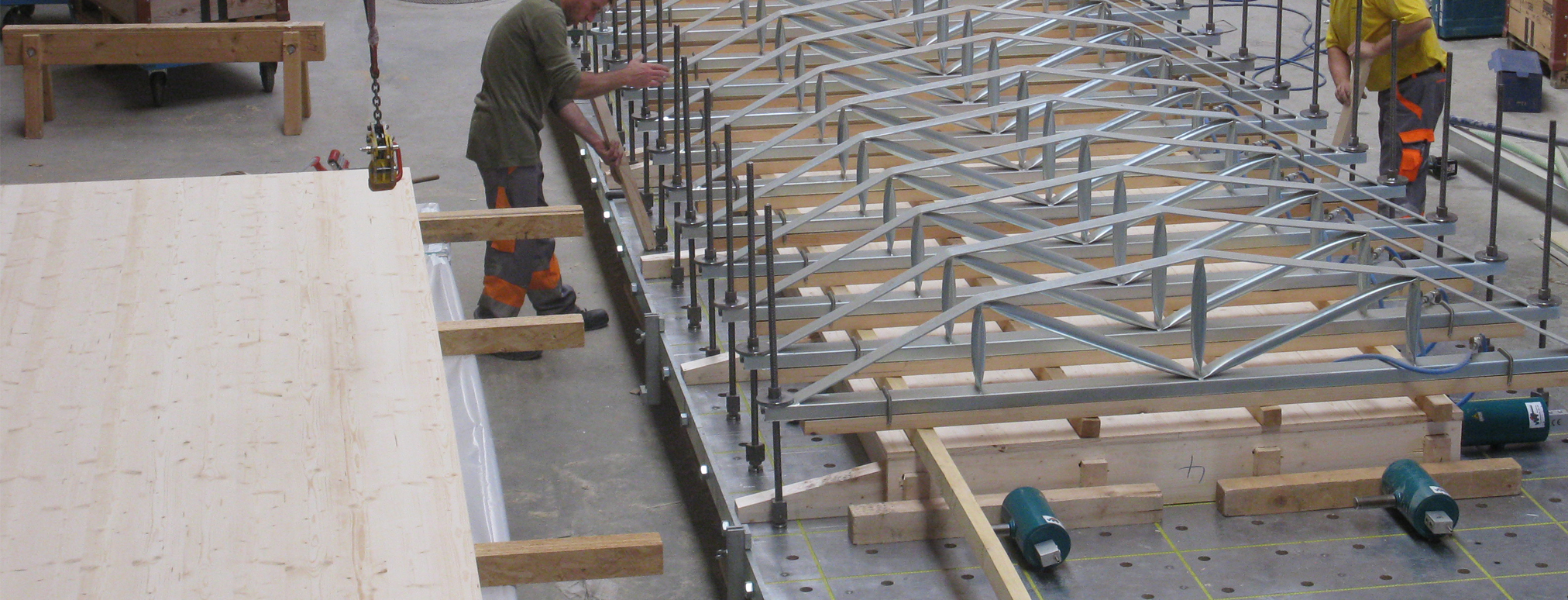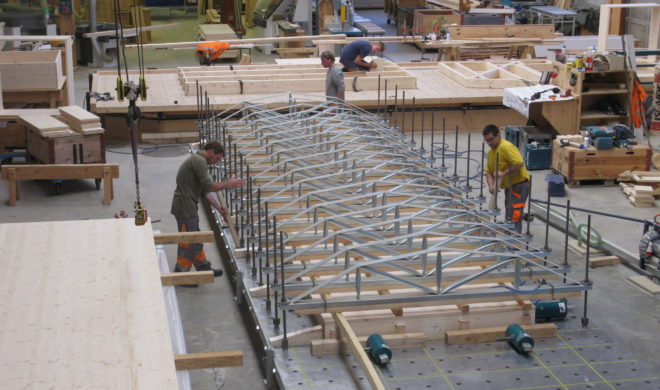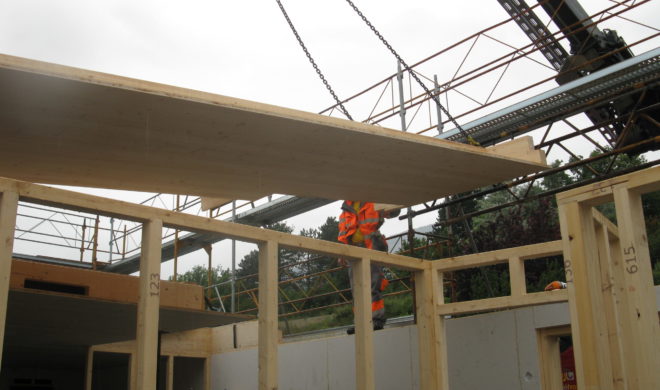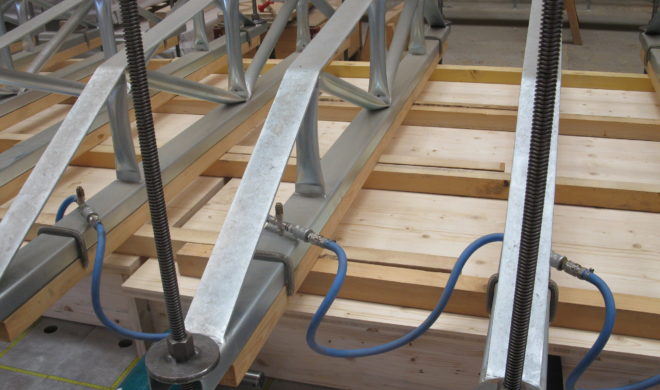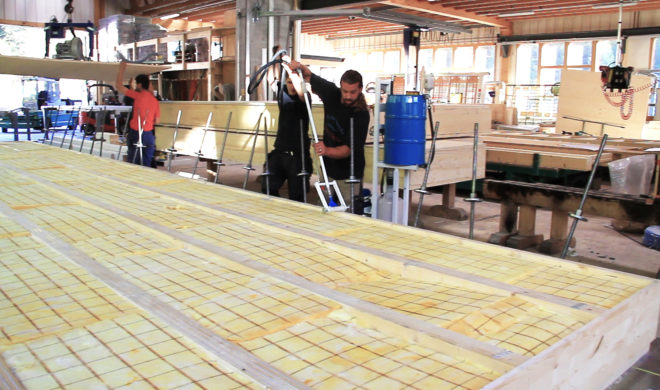Timber and Adhesive
Eine starke Verbindung
The latest trend in timber construction is the gluing of load-bearing wooden parts such as box girders and ribbed slabs. The adhesive connection gives them excellent structural advantages, with which they not only compete with traditional wooden ceilings, but also with solid wood and, thanks to efficient and inexpensive production methods, also with concrete ceilings.
CH.Holzbau, Ausgabe 01 2014
Automatic Google-Translation from the German Original:
“The architects’ requirements for roofs and ceilings are clear,” says Damien Gigandet, timber construction engineer (FH) and project manager at Walliser Dénériaz S.A. in Sion. “You want longer and longer elements that take up less space.” With traditional wooden ceilings with a maximum span of four meters, you quickly reach your limits. For multi-storey buildings one often has to resort to wood-concrete connections or solid wood panels for load-bearing components.
Advantages of glued wooden parts on the market
Compared to traditional wooden ceilings, box elements (adhesive bond of beam structure with wood-based panels on both sides) and ribbed ceilings (only one-sided wood-based panel) have the advantage of improved statics. Thanks to the adhesive connection, box elements can have over 50 percent more span or, alternatively, their thickness can be reduced by a third. In addition, the adhesive bond gives them improved vibration stiffness, which makes freely spanned elements up to seven or eight meters possible.
Compared to solid wood panels, box elements have the advantage of the cavities between the beams. These enable additional heat and sound insulation and also offer space for electrical installations. Thanks to the adhesive connection, wood can also be saved compared to solid wood panels and traditional wooden ceilings, which reduces costs. With new, efficient production methods, there is now a further possibility of reducing costs and thus becoming competitive with inexpensive concrete ceilings. New production methods make glued wooden parts competitive At Dénériaz, up to now, an adhesive has been used to glue box elements, which hardened without pressing and allows a glue joint of one to six millimeters. “This type of adhesive was very expensive,” explains Gigandet. “Because of the thick glue line, we needed a large amount and the adhesive was very hard and could not withstand the shrinking and swelling of the wood.” Other traditional production methods such as nailing or screwing are very time-consuming and costly and often do not provide convincing test results.
Together with customer companies, the Swiss machine manufacturer Woodtec Fankhauser GmbH has now developed a new, pneumatic system for the production of box elements. The pneumatic pressing device has the advantage that box elements can be glued and pressed with wood-based panels on both sides in a single operation, which was previously only possible in two steps. The fact that there is no need to screw not only saves time, it also saves costs for expensive special screws and the surfaces are not drilled through. As a result, the wood-based panels of the box element have a load-bearing function and can also be used as a visible surface.
Precisely defined pressing pressure ensures safety
The press device is an extension of the already widespread Woodtec element construction table. The beam structure can easily be prepared on this. Then the wooden panels are glued on and fixed to the press frame on both sides of the element in the perforated grid of the element construction table at intervals of 50 centimeters. These are connected to the compressed air and then press pneumatically on the component, with up to four tons per press frame. A precisely controllable and monitorable pressure is a decisive factor in the pneumatic production method. In this way, correct gluing can be guaranteed to architects, engineers and builders, which is essential for load-bearing components.
Timber and Adhesive
The open time of the adhesive is decisive in practice
Dénériaz uses a polyurethane adhesive with one hour open time. Since the pressing time is three times as long as the open time, a maximum of two glues per day can be achieved, whereby several elements can be pressed on top of each other. In the future, however, Dénériaz wants to reduce the open time to 20 to 30 minutes in order to be able to cope with three to four pressing cycles, as other customers are already doing.
Multi-storey buildings as a market opportunity
The efficient production of box elements with the pressing device is intended to move the production of multi-storey wooden structures increasingly within the reach of commercial enterprises, explains Thomas Fankhauser, managing director and founder of the internationally active Woodtec Fankhauser GmbH. Thanks to their static, energetic and acoustic advantages, box elements open all doors, especially with such objects. Since the pressing device is integrated on the element construction table, it can be used for the production of normal wooden frame walls in addition to gluing and pressing wooden parts. Customer experience shows that only about 20 to 30 percent of the working time is glued. Thanks to the additional use for timber frame construction, the system is better utilized and also allows the pre-production of all parts of a timber structure from A to Z.
Your own handheld glue application
Since the application of adhesive is always difficult and there are really no suitable solutions on the market, Woodtec decided without further ado to bring its own device onto the market. When it comes to knowledge transfer, it was possible to fall back on over ten years of experience with automated adhesive application portals for large-area presses.
The big challenge when applying PUR adhesives is the hardening of the adhesive in hoses and valves. Thanks to the ingenious choice of materials and a hermetic circuit, the device is ready for use within minutes, even after months of downtime. Even when changing the glue container, there is no hardening. For the production of box elements, the hand-held device is equipped with a roller that enables application in a straight line and in a forward direction. This is guided laterally on the webs. A hand gun is available for other applications, as well as automatable valves and cast pipes for large-area application.
More News
Show All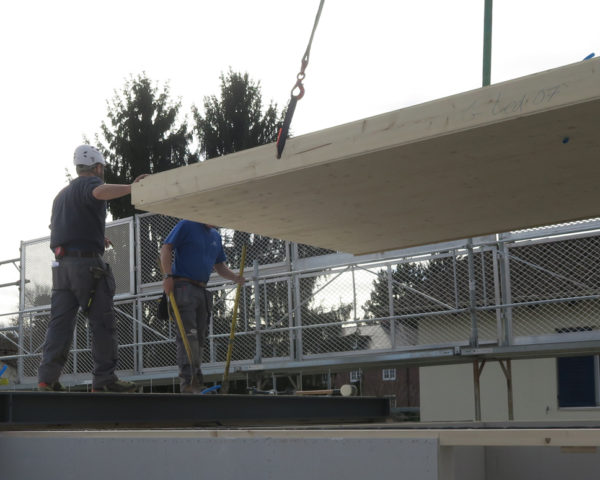
Added Storeys and Extensions
With increasing urbanization and the legislative measures against urban spraw…
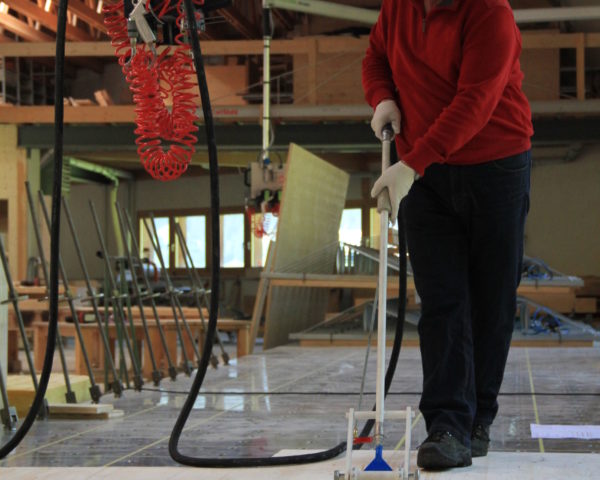
Connecting with Adhesives
Fasteners do not always have to be used to manufacture wooden construction el…
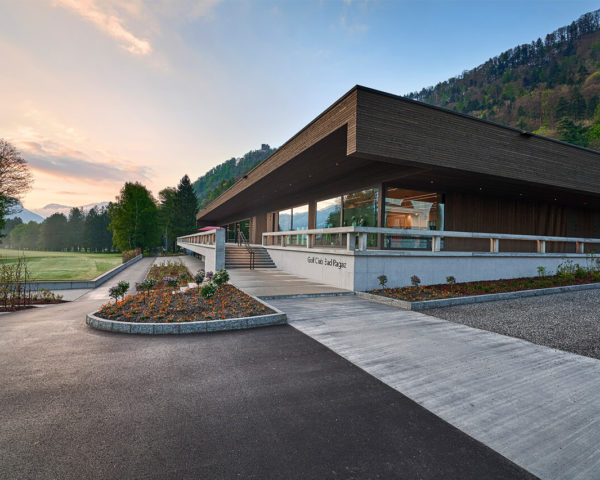
Glued Box Girders – Completely Without Screws
Glued box girders for roofs and ceilings with a larger span
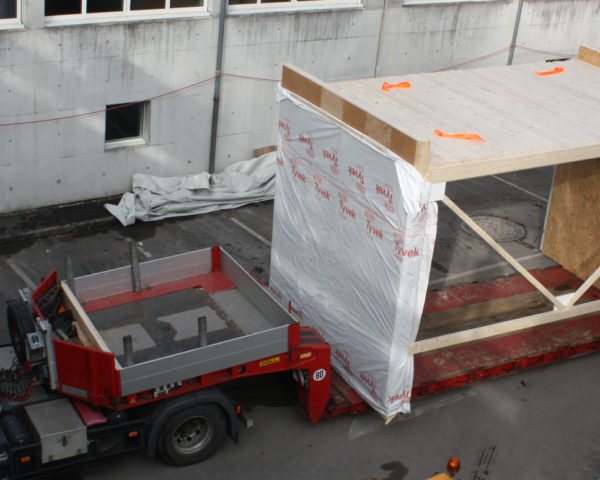
Timber for Athletes
Whether sprinting, hurdling, long jump or javelin throwing – thanks to ribbed…
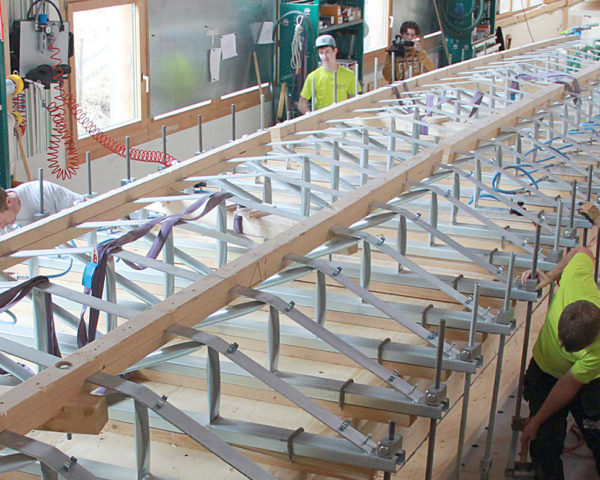
The structures of the future
Glued Box Girders with 21 m span for exposition hall
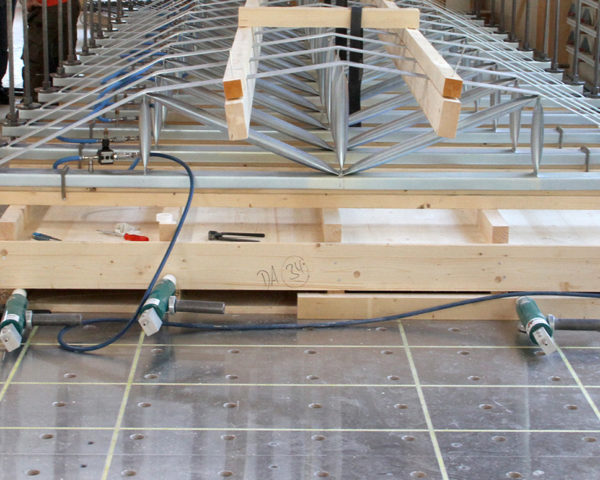
Pneumatically Pressed Box Girders
With their energetic, static and aesthetic properties, box girders are popula…
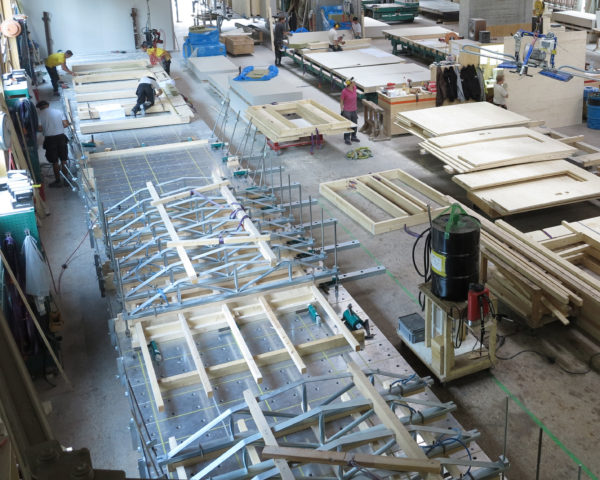
Pneumatic Pressing Technology
A new production method changes the production of box girder elements for use…
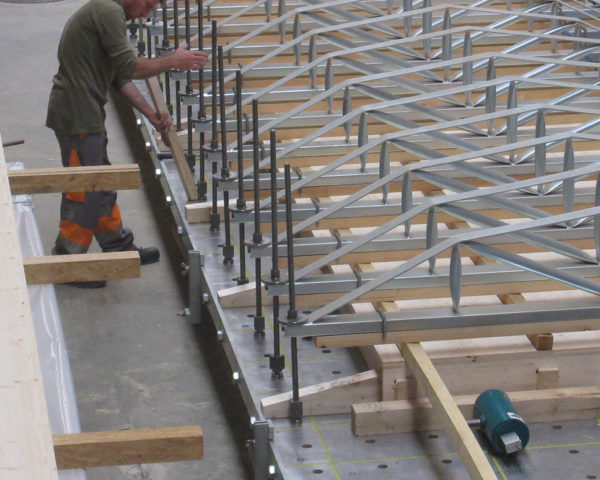
Timber and Adhesive
The latest trend in timber construction is the gluing of load-bearing wooden …
